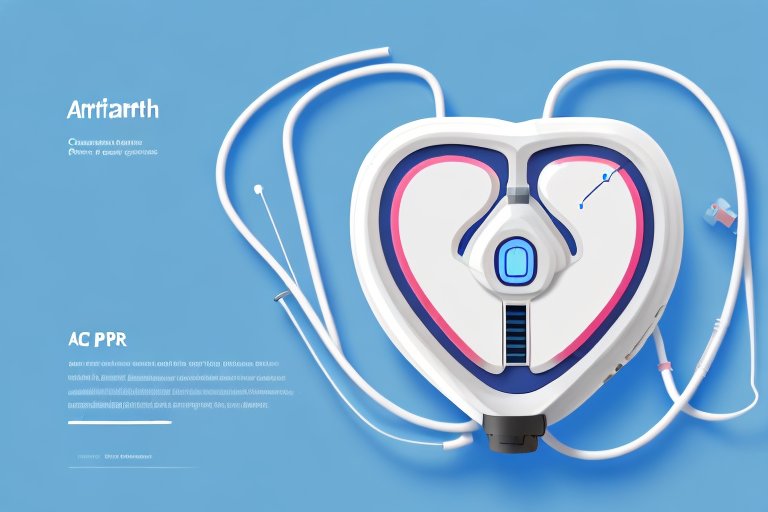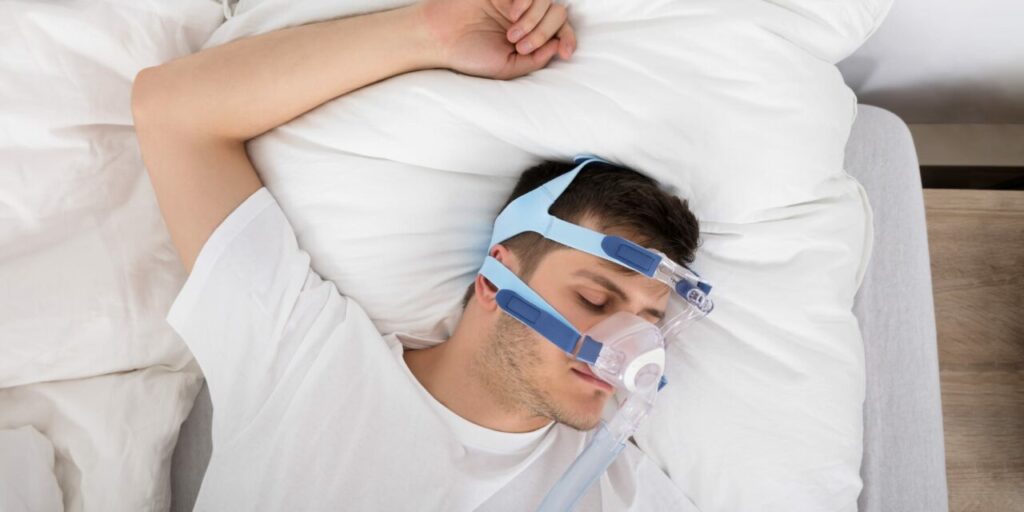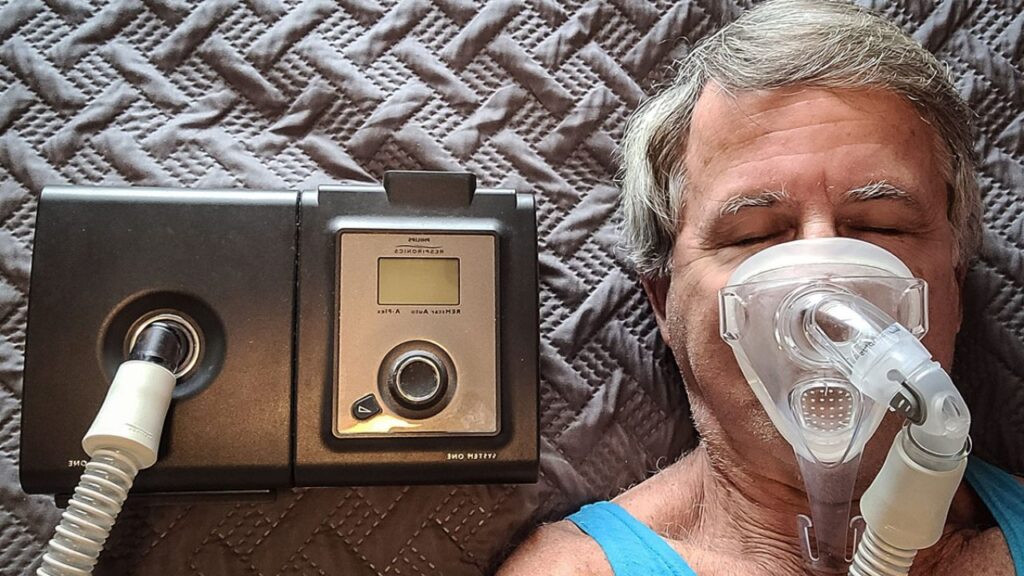The role of CPAP machines in reducing cardiovascular risks cannot be understated. These devices provide essential support for individuals suffering from sleep apnea, a condition that has been strongly linked to heart disease and other cardiovascular complications. In this article, we will delve into the understanding of CPAP machines, explore the connection between sleep apnea and cardiovascular disease, discuss the science behind CPAP and cardiovascular risk reduction, highlight the benefits of CPAP beyond sleep apnea treatment, and provide tips for overcoming challenges in using CPAP machines.
Understanding CPAP Machines
What is a CPAP Machine?
A CPAP (Continuous Positive Airway Pressure) machine is a medical device that delivers a constant flow of air pressure to individuals with obstructive sleep apnea (OSA). OSA is a sleep disorder where the airway becomes partially or completely blocked during sleep, resulting in interrupted breathing patterns. It is estimated that approximately 22 million Americans suffer from sleep apnea, with many cases going undiagnosed. Sleep apnea can have serious health consequences if left untreated, including an increased risk of heart disease, stroke, and diabetes.
Buy cpap machine online have become the gold standard treatment for OSA, as they help to keep the airway open and ensure a constant supply of oxygen to the body throughout the night. The use of CPAP therapy has been shown to significantly improve sleep quality, reduce daytime sleepiness, and improve overall quality of life for individuals with sleep apnea. Click here for more innovations in CPAP technology.
How Does a CPAP Machine Work?
A CPAP machine consists of three main components: a small air pump, a mask that covers the nose and/or mouth, and tubing that connects the pump to the mask. The machine works by gently pressurizing the air and delivering it through the mask into the airway. This constant flow of pressurized air acts as a splint, preventing the collapse of the airway and allowing for normal breathing.

CPAP machines are typically set to a specific pressure level, which is determined by a sleep specialist based on the individual’s needs. The pressure level can be adjusted to ensure optimal treatment and comfort. Some CPAP machines also offer additional features, such as heated humidifiers, which help to prevent dryness and irritation in the airway.
It is important for individuals using CPAP machines to find a mask that fits properly and is comfortable to wear throughout the night. There are various types of masks available, including nasal masks, full face masks, and nasal pillows, allowing individuals to choose the option that works best for them.
By providing a steady stream of air, CPAP machines effectively treat the interruptions in breathing that occur during sleep. This helps to improve oxygen levels in the blood, reduce snoring, and prevent the negative health consequences associated with sleep apnea.
It is worth noting that while CPAP machines are highly effective in treating sleep apnea, they do require regular maintenance and cleaning to ensure optimal performance. The mask and tubing should be cleaned daily, and the filter should be replaced regularly to prevent the buildup of dust and allergens.
In conclusion, CPAP machines have revolutionized the treatment of obstructive sleep apnea. By delivering a constant flow of pressurized air, these devices help to keep the airway open and ensure a restful night’s sleep. With proper use and maintenance, CPAP machines can greatly improve the quality of life for individuals with sleep apnea.
The Connection Between Sleep Apnea and Cardiovascular Disease
The Impact of Sleep Apnea on the Heart
Sleep apnea has a profound impact on the heart and cardiovascular system. The repeated episodes of apnea (breathing cessation) and hypopnea (shallow breathing) during sleep can lead to a variety of cardiovascular complications. The sudden drop in oxygen levels and the subsequent release of stress hormones place significant strain on the heart, increasing the risk of heart rhythm abnormalities, heart failure, and even heart attack.
When a person with sleep apnea experiences an episode of apnea or hypopnea, the lack of oxygen triggers a cascade of events in the body. The brain sends signals to the blood vessels to constrict, attempting to redirect blood flow to vital organs. This constriction increases blood pressure and puts additional strain on the heart. Over time, the constant fluctuation in blood pressure can lead to the development of hypertension, a condition characterized by consistently high blood pressure.
Furthermore, the release of stress hormones, such as adrenaline and cortisol, during apnea episodes can have detrimental effects on the heart. These hormones increase heart rate and constrict blood vessels, further elevating blood pressure. The combination of increased blood pressure and irregular heart rhythms can significantly increase the risk of cardiovascular events.
Sleep Apnea and Hypertension
One of the most prevalent cardiovascular risks associated with sleep apnea is hypertension, or high blood pressure. The intermittent drops in oxygen levels trigger a physiological response, causing the blood vessels to constrict and the heart to pump harder. Over time, this can lead to chronic hypertension, which significantly raises the risk of stroke, heart disease, and other cardiovascular events.
Research has shown that individuals with sleep apnea are more likely to develop hypertension compared to those without the sleep disorder. The exact mechanisms behind this association are still being studied, but it is believed that the repeated episodes of apnea and hypopnea disrupt the normal regulation of blood pressure during sleep. The body’s natural response to the lack of oxygen is to increase blood pressure, which, if occurring frequently, can lead to sustained high blood pressure levels.

Moreover, the impact of sleep apnea on hypertension is not limited to nighttime. Studies have found that individuals with sleep apnea often experience elevated blood pressure levels throughout the day, even when they are awake. This suggests that the effects of sleep apnea on blood pressure regulation extend beyond the sleep period and have long-lasting consequences on cardiovascular health.
In addition to hypertension, sleep apnea has been linked to other cardiovascular conditions such as atrial fibrillation, a type of irregular heartbeat, and coronary artery disease, which involves the narrowing of the blood vessels that supply the heart. The combination of these factors significantly increases the risk of heart attack and stroke in individuals with sleep apnea.
It is important to note that while sleep apnea is a significant risk factor for cardiovascular disease, it is a treatable condition. Continuous positive airway pressure (CPAP) therapy, lifestyle modifications, and weight loss can help manage sleep apnea and reduce the associated cardiovascular risks. Seeking medical attention and adhering to the prescribed treatment plan is crucial for improving both sleep quality and heart health.
The Science Behind CPAP and Cardiovascular Risk Reduction
CPAP and Blood Pressure Regulation
CPAP therapy plays a vital role in regulating blood pressure in individuals with sleep apnea. By ensuring a continuous supply of oxygen throughout the night, CPAP machines help prevent the fluctuations in blood pressure that occur during apnea episodes. This is particularly important because untreated sleep apnea can lead to chronic high blood pressure, also known as hypertension.
When a person with sleep apnea experiences an apnea episode, their airway becomes blocked, causing them to momentarily stop breathing. This leads to a decrease in oxygen levels in the blood, triggering the body’s stress response. As a result, the blood vessels constrict, and the heart rate increases, causing a temporary rise in blood pressure. Over time, these repeated episodes can put a strain on the cardiovascular system and increase the risk of heart disease, stroke, and other complications.
However, by using CPAP therapy, individuals with sleep apnea can maintain a steady flow of oxygen, preventing the body from entering this stress response. By doing so, CPAP helps to regulate blood pressure and reduce the risk of hypertension-related complications.
CPAP and Heart Rate Variability
Heart rate variability (HRV) refers to the variation in the time interval between consecutive heartbeats. It is an important indicator of the autonomic nervous system’s ability to regulate the heart’s rhythm and respond to different conditions. Reduced HRV has been associated with an increased risk of cardiovascular disease.
Individuals with sleep apnea often experience disruptions in their breathing pattern during sleep, leading to intermittent drops in oxygen levels. These drops in oxygen trigger the body’s stress response, causing the heart rate to fluctuate and reducing heart rate variability.
CPAP therapy has been shown to improve HRV in individuals with sleep apnea, indicating a positive impact on cardiovascular health. By stabilizing breathing patterns and promoting uninterrupted sleep, CPAP helps restore normal heart rate variability and reduces the risk of heart rhythm abnormalities.
Furthermore, CPAP therapy not only improves HRV but also helps in reducing the overall workload on the heart. By ensuring a continuous supply of oxygen, CPAP reduces the need for the heart to work harder to compensate for the decreased oxygen levels during apnea episodes. This can help improve overall cardiac function and reduce the risk of cardiovascular complications.
In conclusion, CPAP therapy is a crucial treatment for individuals with sleep apnea, not only for improving sleep quality but also for reducing the risk of cardiovascular diseases. By regulating blood pressure and improving heart rate variability, CPAP plays a significant role in promoting cardiovascular health and reducing the burden on the heart. It is essential for individuals with sleep apnea to adhere to CPAP therapy consistently to reap these long-term benefits and improve their overall well-being.
The Benefits of CPAP Beyond Sleep Apnea Treatment
CPAP and Weight Loss
Obesity is a significant risk factor for both sleep apnea and cardiovascular disease. Fortunately, CPAP therapy can contribute to weight loss and help individuals achieve a healthier body mass index (BMI). By improving the quality of sleep and providing better oxygenation, CPAP machines can enhance energy levels and promote physical activity, ultimately aiding in weight management and reducing the cardiovascular risks associated with obesity.
CPAP and Diabetes Control
Sleep apnea and diabetes often go hand in hand, with both conditions sharing common risk factors. CPAP therapy has been shown to improve glycemic control in individuals with type 2 diabetes and sleep apnea. By ensuring adequate restorative sleep and reducing the physiological stress caused by apnea episodes, CPAP can contribute to better blood sugar regulation and decrease the risk of diabetes-related complications.
Overcoming Challenges in Using CPAP Machines
Common Side Effects of CPAP Machines
While CPAP therapy is highly effective, some individuals may experience side effects during the initial stages of treatment. These side effects can range from nasal congestion and dryness to skin irritation from mask use. However, most side effects can be alleviated by adjusting the machine settings or using additional accessories, such as humidifiers or nasal saline sprays. It is crucial to work closely with healthcare professionals to troubleshoot and overcome any challenges encountered during CPAP therapy.
Tips for Adapting to CPAP Therapy
Adapting to CPAP therapy can be a process that requires patience and commitment. Here are some tips to help make the adjustment more seamless:
- Start slowly: Begin by using the CPAP machine during daytime naps to gradually get accustomed to the sensation of wearing the mask and using the device.
- Ensure proper fit: Work with a healthcare professional to find the right size and style of mask that provides a comfortable and secure fit.
- Maintain cleanliness: Regularly clean the mask, tubing, and other components of the CPAP machine to ensure proper hygiene and minimize the risk of infections.
- Establish a routine: Incorporate the use of the CPAP machine into your nightly routine to make it a habitual part of your sleep regimen.
- Seek support: Joining support groups or reaching out to others who have successfully adapted to CPAP therapy can provide valuable insights and encouragement.
By following these tips and maintaining a positive mindset, individuals can overcome the initial challenges and embrace the long-term benefits of CPAP therapy in reducing cardiovascular risks.In conclusion, CPAP machines play a critical role in reducing cardiovascular risks associated with sleep apnea. Understanding their function, recognizing the connection between sleep apnea and cardiovascular disease, and harnessing the science behind CPAP and cardiovascular risk reduction are crucial steps in promoting better heart health. Furthermore, the benefits of CPAP extend beyond sleep apnea treatment, encompassing weight management, glycemic control, and overall cardiovascular well-being. While challenges may arise during CPAP therapy, they can be overcome with the right support and mindset. With consistent and proper use of CPAP machines, individuals can significantly reduce their cardiovascular risks and improve their quality of life.

